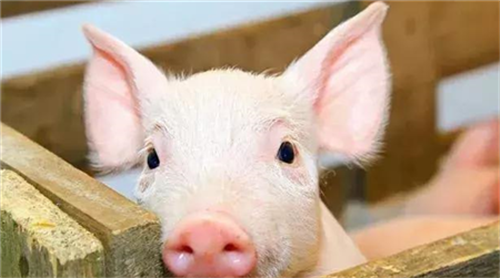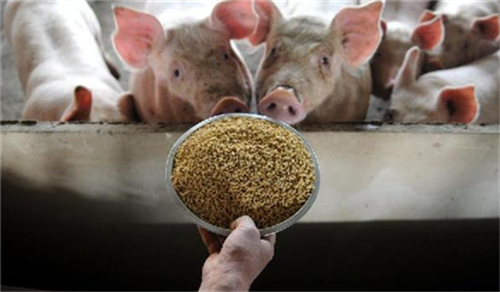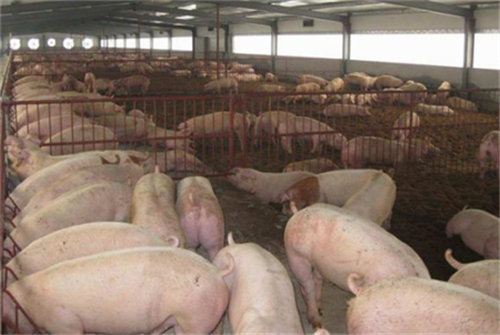How many key steps do you take to raise a good nursery pig?
In intensive pig production, piglets weaned to the age of 60-75 days are usually called conservation piglets. It is another important production stage after the management of suckling piglets.
Problems in the conservation of piglets
1. Stress during weaning
Intensive production often adopts one-off weaning method, sows are transferred from delivery house to mating or pregnancy house, and piglets are fed directly or in the original enclosure for a week and then enter the nursery. The sudden changes in the living conditions of piglets, such as leaving the mother, turning to the group, and so on, undoubtedly cause great stress to the normal physiological activities of the piglets.
two。 Stress of digestive function
Piglets were supplied entirely by solid feed instead of liquid breast milk and a small amount of open feed. Because their digestive function is not yet perfect, whether they can adapt to the nutritional composition of the existing feed and some special allergic factors is a severe test for piglets.
3. Stress of environmental change
The environment in an intensive pig farm is usually different from that in a nursery. This includes: fence structure and area, feeding system, water supply system, temperature, ventilation, lighting conditions and so on. Piglets lose the original environment of the delivery house, to adapt to the nursery environment, and establish new living habits and order relationship. Poor conservation environment will make it difficult for low-order pigs to adapt or even survive.
4. The stress of managing change
Delivery and lactation management is different from conservation management, which includes: feeding operation system, environmental condition control, population size, feeding density, group mode, training methods, necessary operations (such as immunity, treatment) and so on. The impact of changes in artificial management conditions on the conservation of pig herds can not be ignored.
The development of pig viscera and immune system is not perfect, the function is not complete, can not resist the complex stress environment, so the incidence is high.

Production Technology of Piglet Conservation
1. Environmental management measures
(1) temperature requirements:
The temperature of the nursery environment has a great influence on the piglets. Under the condition of cold urgency, the secretion of adrenal hormone increased significantly, the immunity decreased, the growth retarded, and the incidence of dysentery, gastroenteritis and pneumonia also increased.
It was reported that the comparison of daily gain and dysentery incidence of piglets at 6-10 ℃ and 20-25 ℃ in nursery was 1 ∶ 1.63 and 1 ∶ 0.54respectively.
In production, heating measures should be taken when the temperature of the nursery is lower than 20 ℃. When the temperature is not too low, infrared lights and ground hot plates are usually used. When the temperature is lower than 10 ℃, it is necessary to use hot air, heating and other methods to heat up.
(2) ventilation requirements:
Ventilation is a measure to solve the harmful gas content and increase the fresh air content in the nursery. High levels of dirty gases such as ammonia and hydrogen sulfide will increase the incidence of pneumonia in piglets. However, unlimited ventilation and ventilation are not suitable for piglets, especially in cold seasons or cold areas, where excessive ventilation can lead to a sharp drop in temperature in the nursery.
In production, heat preservation and air exchange should be adjusted in a more flexible way, taking into account both. At high temperature, there is more air exchange, and at low temperature, it is heated up and then changed.
(3) piggery dust:
Due to the factors such as large feeding scale, high pig density, large production operation and so on, a large amount of dust is attached to the air in the nursery of intensive pig farms, which is disadvantageous to piglets' breathing. but what is more serious is that the dust can carry some viruses or bacteria into the respiratory system, bringing potential opportunities for the occurrence of some diseases.
In intensive production, the problem of dust is easy to ignore and easy to solve, such as the use of pellet feed, regular cleaning, careful operation and so on are effective dust removal measures.
(4) cleaning pigsty:
It is a necessary work to clean and disinfect the fence and floor of the nursery with high bed and leaky floor. However, the more non-cleaning, the better, because unclean or cooler groundwater is bad for piglets and heat preservation in the house, especially in cold areas.
In production, the general principle of cleaning pigsty is: clean and disinfect the empty house before (after) conversion, the high temperature in summer can appropriately increase the cleaning times (2-3 times / week), but to avoid direct water flow to piglets, it is best to use shower or spray to cool down.
In high-bed (or floor) nurseries with artificial manure removal, pigs are generally not brought to clean pig houses in winter, unless they are too dirty, they are cleaned at the highest temperature of the day.
two。 Feeding and management measures
Three maintainances:
The weaning piglets were kept in the original circle for 1 week after the sows left, and the original feed was maintained for 1-2 weeks after being transferred to the nursery.
Three transitions:
For 2-3 weeks of nursing piglets, the lactation feed should be gradually transferred to weaned piglets, which can be smoothly changed by gradually changing the nutritional composition of the diet or the mixing ratio of the two kinds of feed.
The feeding system should be changed gradually, which includes the type and form of feed, the frequency, time and amount of feed, and the method and time of feeding operation.
The operation system should be gradually transitional, including lighting measures in the nursery, heat preservation and ventilation measures, operation habits of breeders, and so on.
Density and tuning:
Feeding density is of great significance to the development of piglets, which depends on the feeding trough, drinking fountain or sink, enclosure area, ventilation, heat preservation and other conditions provided to piglets by the nursery.
In principle, intensive pig farms require one pen per litter, and each head occupies 0.2-0.4 square mm lying area. It is only necessary to adjust the group when it can not meet the requirements or consider the use of enclosure area and the difference of individual strength.
The pig herd to be combined should be based on the principle of dividing the weak but not the strong, the weak and the weak, and the combination of the strong and the strong.
The newly combined pigs should be carefully cared for within one week until a normal sequence relationship is established.
Related
- On the eggshell is a badge full of pride. British Poultry Egg Market and Consumer observation
- British study: 72% of Britons are willing to buy native eggs raised by insects
- Guidelines for friendly egg production revised the increase of space in chicken sheds can not be forced to change feathers and lay eggs.
- Risk of delay in customs clearance Australia suspends lobster exports to China
- Pig semen-the Vector of virus Transmission (4)
- Pig semen-the Vector of virus Transmission (3)
- Five common causes of difficult control of classical swine fever in clinic and their countermeasures
- Foot-and-mouth disease is the most effective way to prevent it!
- PED is the number one killer of piglets and has to be guarded against in autumn and winter.
- What is "yellow fat pig"? Have you ever heard the pig collector talk about "yellow fat pig"?



